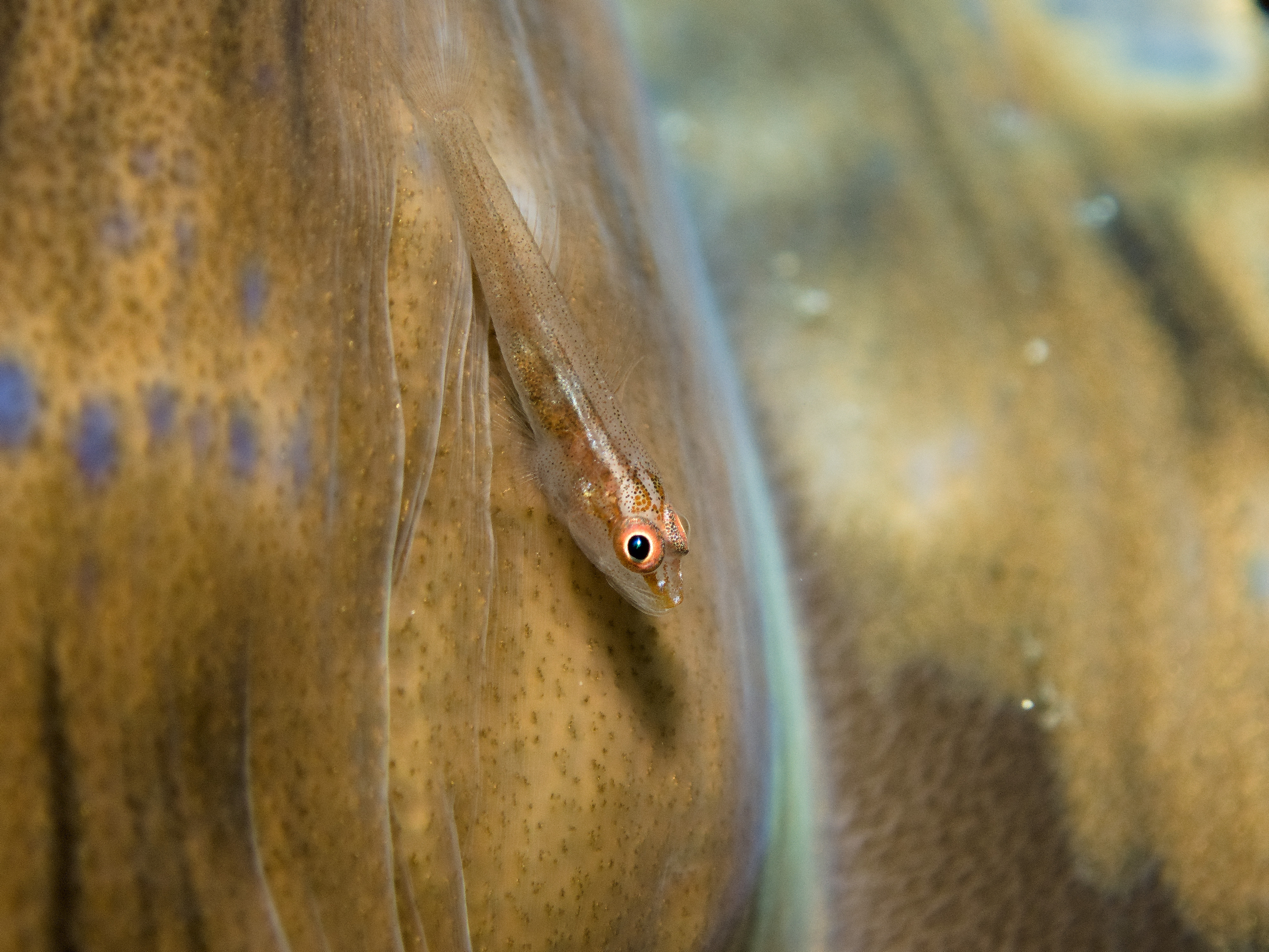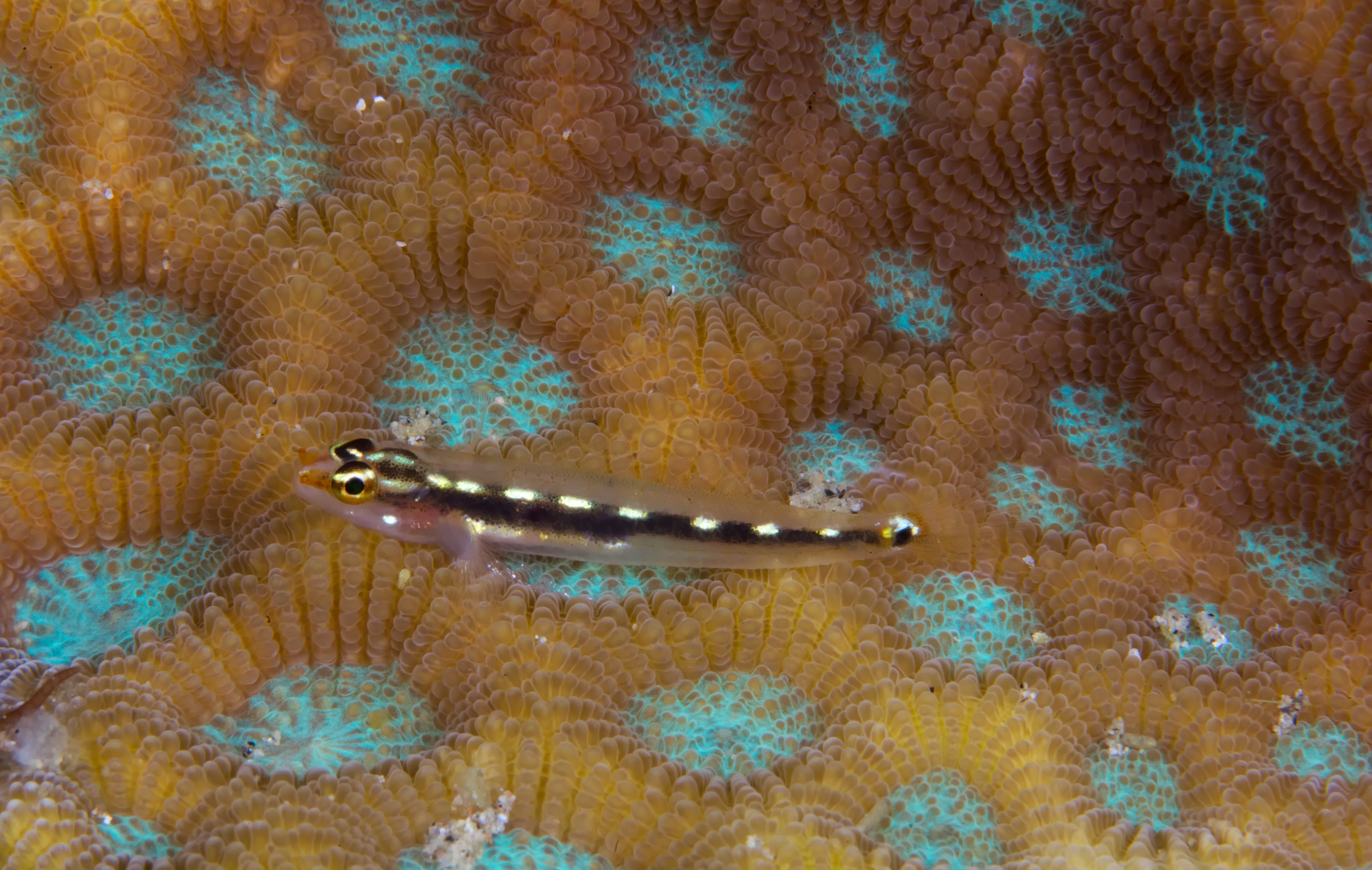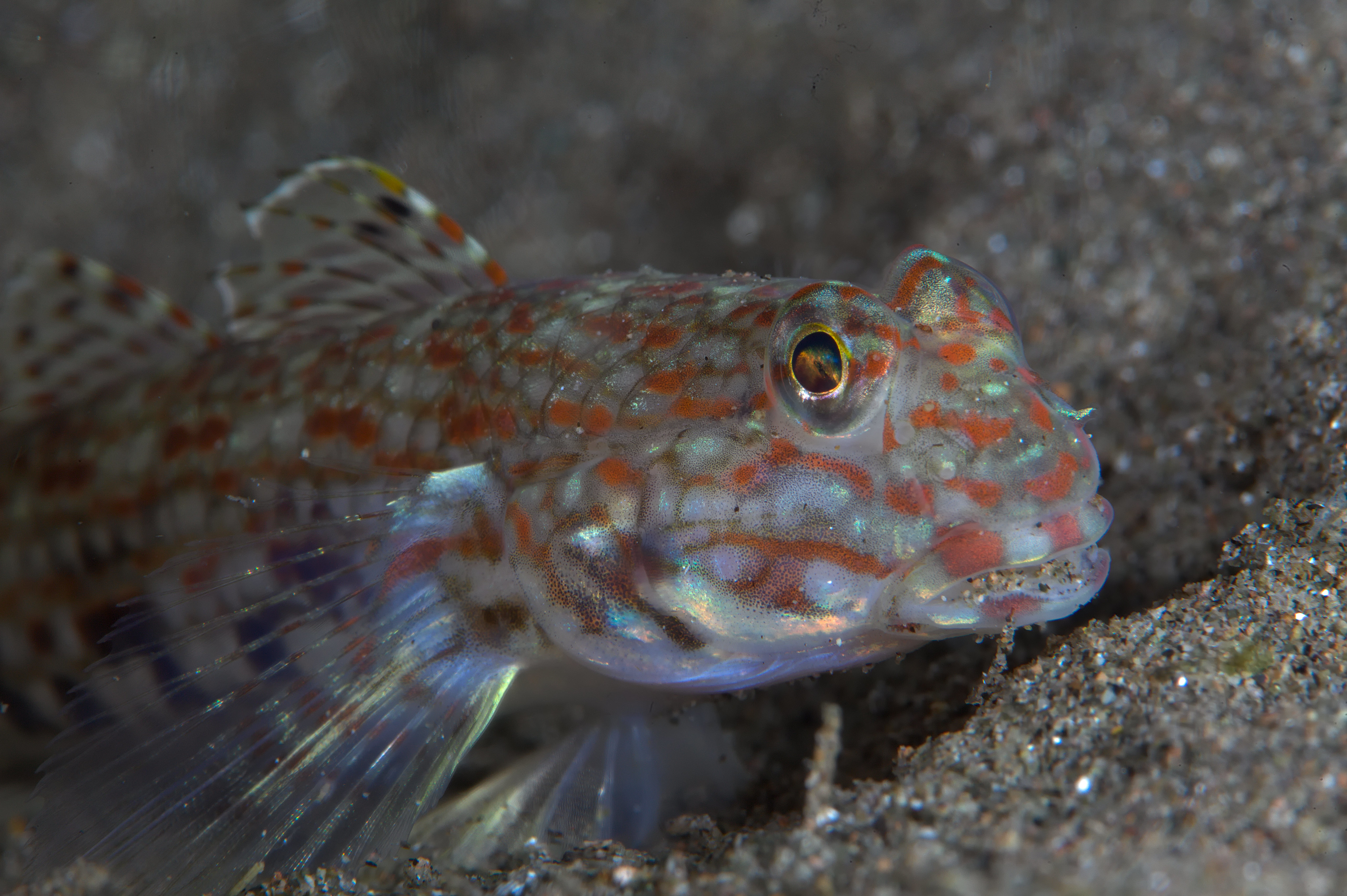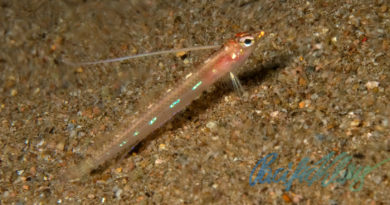The Most Common Gobies in Dauin
Which gobies are most common in and around Dauin, the area in the south of Negros Island in the Philippines where I live and dive? The answer to this question is given by the underwater landscapes in the area. It is well established that the presence or absence of small fishes is determined by physical parameters like wave energy, currents, and bottom composition of an area. This principle is well explained, for instance, here:
Depczynski, M., & Bellwood, D. R. (2005). Wave energy and spatial variability in community structure of small cryptic coral reef fishes. Marine Ecology Progress Series, 303, 283-293.
When moving just a bit south, to the Siaton area, where the reefs are built on limestone rock, not volcanic sand, the goby community looks different right away.
The Species
So, which species are common in Dauin? This follows somewhat of a gamma distribution, with some species very common, and then a drop in abundance for the next batch of species, then species which are only occasionally found, and even more species which are present, but rarely found. The fishes I am listing below are common, according to my own observations; this is not a quantitative study, but a semi-subjective impression from years of diving. Also, in some cases, it’s really rather a genus which is common, not one specific species. I am noting when that is the case. Also check out my goby entries at iNaturalist. Four species/genera which strike me as common in Dauin are these:
Pleurosicya micheli
This ghost goby is common, and perches on a variety of invertebrates, such as giant clams, seen in the image below.
Eviota sp.
Below is an image of Eviota seebrei. But several species of Eviota which are common in the Dauin area, many of them perching on encrusting corals and sponges. These are among the smallest vertebrate animals.
Istigobius decoratus
A very common goby in the sand, especially in the shallower parts above 10 m. Watch them closely, often they are plagued by ectoparasites.
Amblyeleotris
What you see below is A. guttata, but there are a number of other Amblyeleotris sp. which are common, such as A. stenitzi, and A. diagonalis. These are all shrimp gobies (make sure to follow the link to learn more about the symbiosis they engage in).




